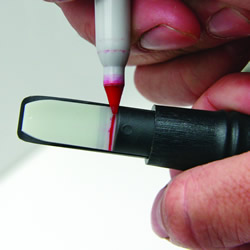By Wade Bourne
Over the years, I’ve made a practice of naming my duck calls. The two I use most frequently are Dominator and Convincer. To me, they are more than inanimate instruments made of acrylic and wood. Instead, they have life and personality. They embody my hopes and help me (sometimes) fulfill my hunting dreams.
Other hunters probably don’t go to such lengths in “bonding” with their calls, but I’d venture that most have favorites they value greatly, which is why picking out a new duck call is such an important exercise.
So what goes into the decision? How does a hunter sift through the myriad combinations of brands, materials, and styles to select the one call that’s best for him or her? Many hunters subscribe to the “sounds good” method. They blow a new call at an outdoor store or sport show, and if it sounds good, they buy it on the spot. Others may like the way a friend’s call sounds, so they order one like it.
Certainly, personal preference is important when buying a new call, but ultimately, hunters should make a selection based on what they need as well as what strikes their fancy.
“Hunters should select a duck call according to where and how they intend to use it,” explains Rick Dunn of Echo Calls in Beebe, Arkansas. “Options that can affect a call’s tone, range, and sharpness include high or low volume; ringing or mellow tone; single or double reed; and acrylic, wood, or polycarbonate construction.”
Hunters who call over long distances, such as open lakes and big rivers, should select a call that is louder and higher in pitch so the notes will carry farther. Conversely, hunters who call mostly to close ducks in environments like flooded timber, potholes, and beaver ponds should pick a call that is softer in volume and pitch. In these environments, “reach” is less important, and sounding “ducky” is more important.
“Choosing between a single-reed and a double-reed call is a matter of personal preference,” Dunn says. “Single-reed calls have more range and are more versatile than double-reed calls, but they are also a little more difficult to master.
Double-reed calls take more air to blow and don’t have as much range as single-reed models. But most double-reed calls have a sweet spot’ that sounds very realistic to passing ducks.”
Most duck calls sold today are made of acrylic, wood, or polycarbonate. Acrylic is very dense, and Dunn says acrylic calls are typically sharper and louder than those made of wood or polycarbonate. Many open-water calls are acrylic.
Wooden calls are usually softer and mellower than acrylic calls, and they are a good choice for close-up calling situations. Polycarbonate (molded plastic) calls fall between acrylic and wood for sharpness and loudness.
Dunn adds that acrylic calls don’t require as much care as wooden calls. “Wooden calls are porous, and they tend to absorb moisture and swell,” he explains. “They should be taken apart after each hunt and allowed to air-dry. But because of the high density of acrylic calls, they won’t swell, and they produce very consistent sounds.”
And finally, what’s the difference between a $140 custom call and a $30 mass-produced call? “You can call ducks with both,” Dunn says. “But custom calls can be finessed more. They are capable of making soft whines and other subtle sounds that mass-produced calls can’t make. A custom call can also be tuned specifically to a hunter’s calling style.”
So when choosing a new duck call, consider these variables: distance, volume, type of material, and cost. After working through these options, apply the “sounds good” test to make the final selection. Then, if you are like me, all that remains is coming up with a good name.
Call Tuning Simplified

Any hunter who has ever taken apart a duck call knows that putting all the internal components back together in the right position can be more difficult than you might think. That’s why it’s a good idea to mark the original placement of the reeds, tone board, and wedge with a magic marker before disassembling them.
Primos Hunting Calls has gone one step further by designing their Wench series duck calls with a patented reed relocation system. The call’s interlocking reed assembly takes much of the guesswork out of call tuning.
Continue Reading









